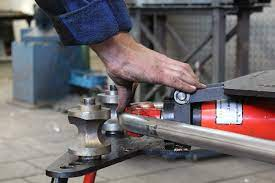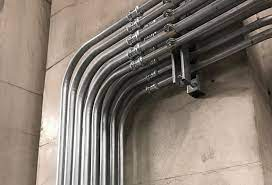Metal bending machines are vital for production across a large range of industries, ranging from automotive to construction, saving the need for joints that are vulnerable to leaks or corrosion. They come in a variety of forms, often with multiple tooling options to make them as customisable as possible. Many projects have come to rely on them, so what are the two main types and their features?

Hydraulic bending machines.
As the name suggests, these robust machines utilise hydraulic power and are able to bend even the most heavy-duty of tubes. They use hydraulic power to force a plunger down, bending the tube. They sometimes come with multiple cylinders allowing for more accuracy in the bending process. On the downside, they lack the flexibility of an Electro tube bending machine, especially for projects that require smaller production runs. A detailed analysis of tube bending is explained in detail here:
Electromechanical tube bending machines.
These use a flywheel operated electronically through a clutch. The advantage of these machines is that they are less power-hungry and more economical, a factor of increasing importance in today’s industries. The curved system employed in these machines means that it needs fewer cylinders which reduces oil consumption as well as the general need for maintenance. A range of Euromac bending machines can be seen at specialist sites such as: www.cotswold-machinery-sales.co.uk/euromac-bending-machines/horizontal-bending-machines.
These machines are truly compact, saving on production space. Their electronic system also means they are easier to operate. The disadvantage of them is once the plunger cycle has started, it cannot be reversed and the cycle needs to be completed.

Conclusions.
The need for tube and pipe bending spans a diverse array of industries. What will be best for one project is not necessarily so for another and there are many factors at play here. Will it be short or long production runs/ What type of material needs to be bent? Is production floor space an issue? You will also need to take into account whether you will need to change tooling for mid-project flexibility.

